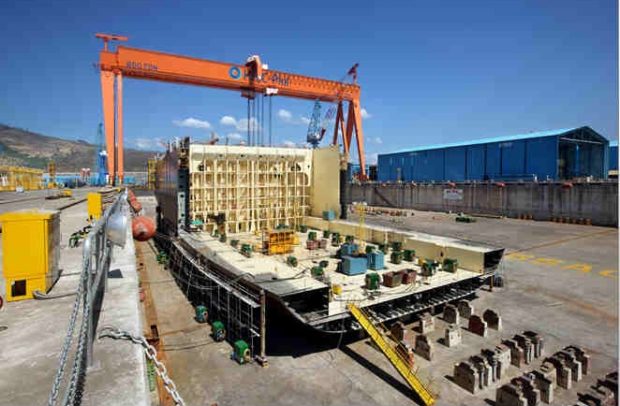
Work at the former Hanjin shipbuilding facility at the Subic Bay Freeport will resume under its new operator and skilled workers, who were displaced when it closed down in 2017, have started getting their jobs back. (Contributed photo)
SUBIC BAY FREEPORT — Officials of Subic Bay Metropolitan Authority (SBMA) have ensured a “smooth transition” in the former Hanjin shipyard, which went bankrupt in 2017, as some of the displaced workers of the facility have already been hired by the new operator.
Rolen Paulino, chair and administrator of SBMA, on Monday (May 23) said the massive shipyard, now called Agila Subic, would house two tenants.
One of the tenants, Vectrus, would be occupying most of the shipbuilding area of the facility, including the quays, Paulino said in a statement.
Vectrus is a global service solutions provider to the United States government and across the world, which offers facility and base operations, supply chain and logistics services, information technology (IT) mission support, and engineering and digital integration services.
Paulino said the Philippine Navy is currently occupying the former Hanjin administrative office, mess hall, and barracks.
He said at least 29 workers were already hired, and Vectrus was expected to employ more skilled-workers who used to work for Hanjin Heavy Industries and Construction Philippines, which closed down due to financial troubles before the COVID-19 pandemic struck.
Paulino said several local and foreign dignitaries inspected the future Agila Subic facility at the Redondo Peninsula here on May 15.
The Department of Finance recently announced that the Fiscal Incentives Review Board (FIRB) has approved the proposed tax perks as endorsed by the SBMA, for the rehabilitation of the aging shipyard.
The project, with an estimated cost of P17 billion, will receive special corporate income tax value-added tax (VAT) exemption from importation, VAT zero-rating on local purchases, and duty exemption on importation.
Paulino’s son, Olongapo Mayor Rolen Paulino Jr., said the city government would provide skills training to its residents in anticipation of a boom in employment in the area.
The mayor said companies that are looking for skilled workers would only need to contact the city government.
Three years ago, Hanjin had a workforce of 30,000 until it went bankrupt and laid off its workers, mostly from the nearby Olongapo City and the provinces of Zambales and Bataan. It is considered the biggest corporate default in local history.
Hanjin owed $400 million to five Philippine banks and $900 million to South Korean lenders, forcing it to file for voluntary rehabilitation in a local court. INQ
RELATED STORY
Dominguez: New US-led owner of Subic shipyard to create 300 new jobs a year

